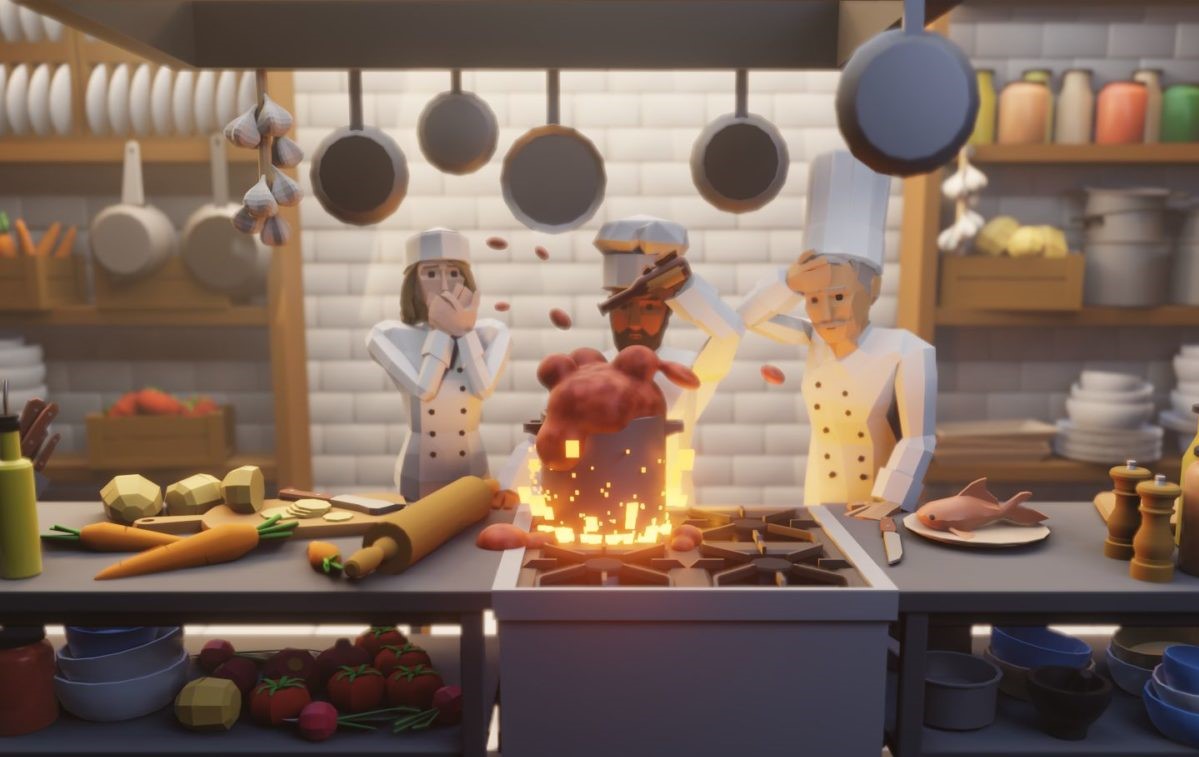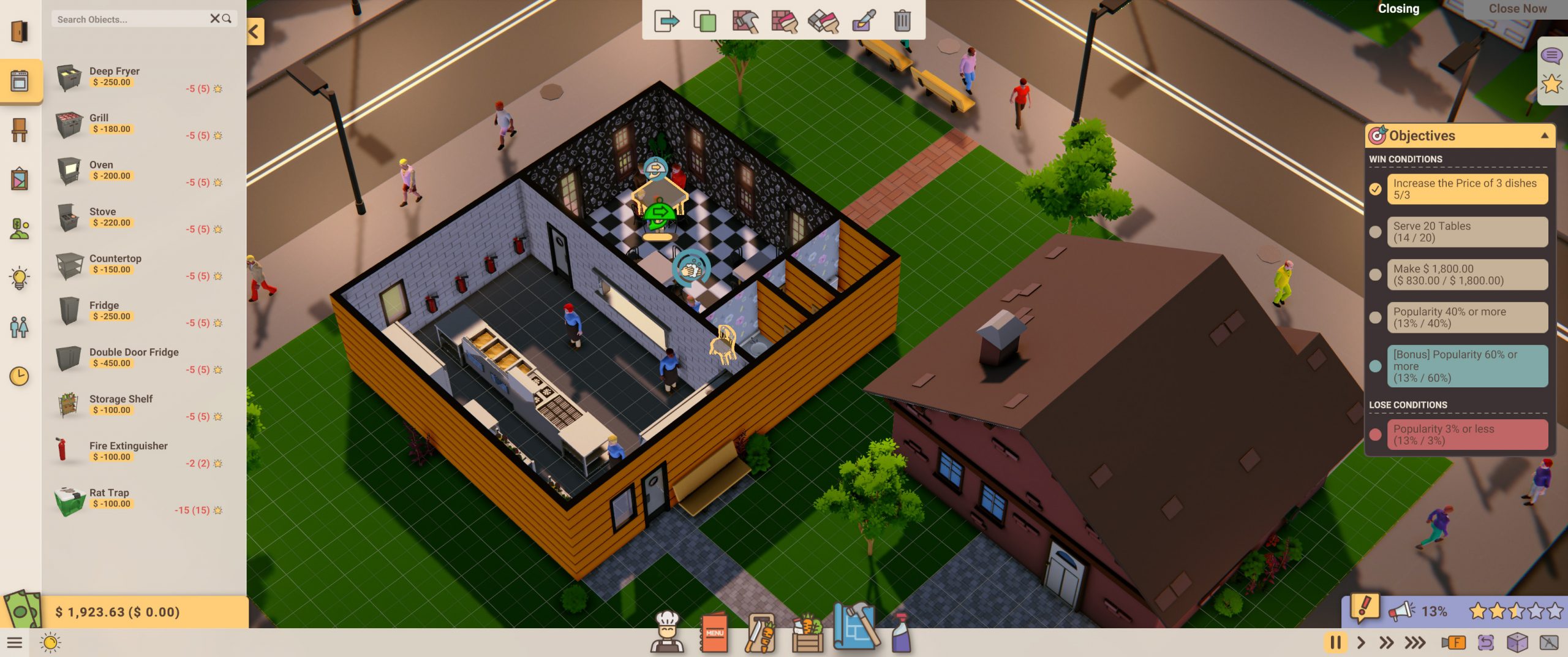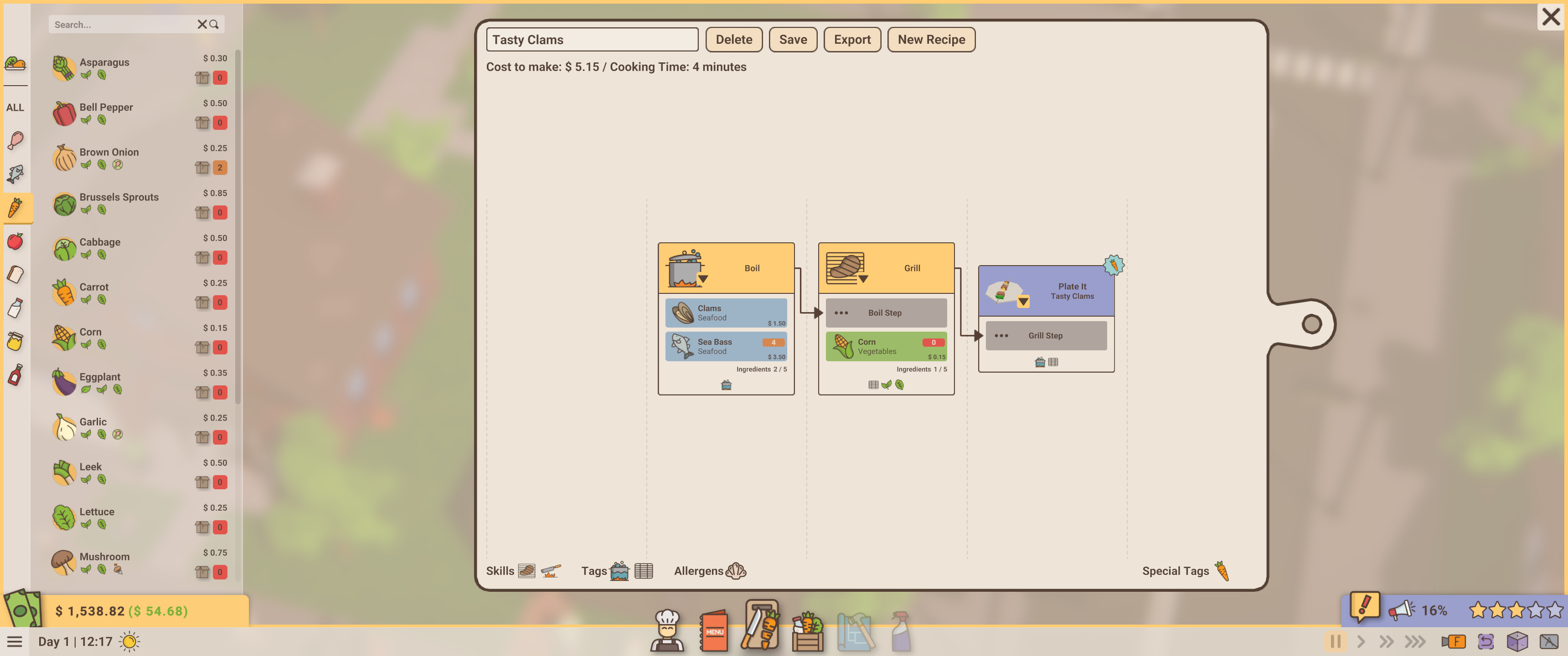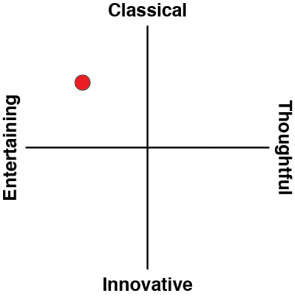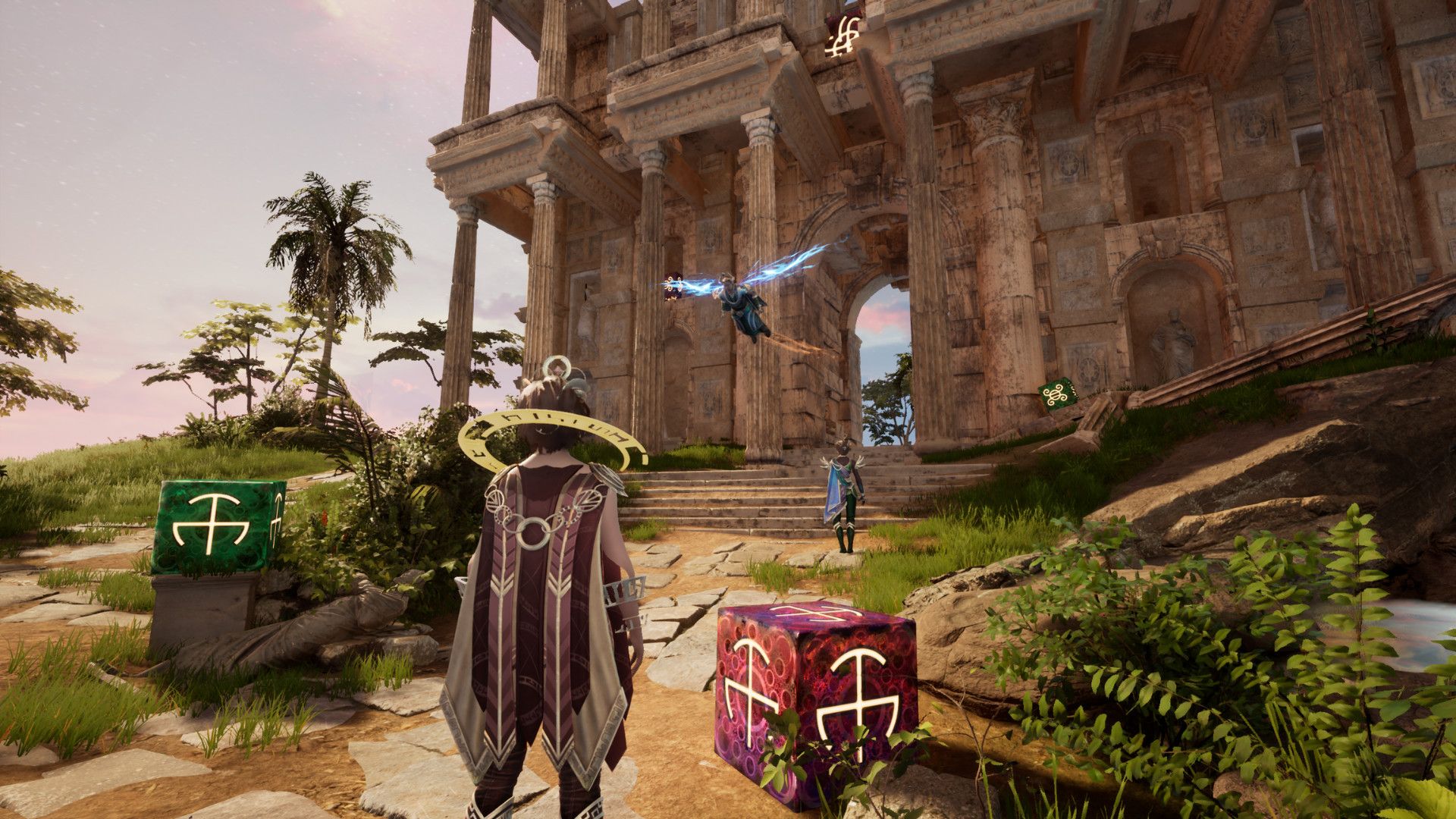I’ve played a lot of restaurant sims (yes, I was obsessed with Diner Dash back in its heyday) so I was excited for the chance to play Recipe for Disaster. It’s more complex than what I’m used to: not only am I designing and running the restaurant, but I’m now also in charge of the menu down to the smallest details as well as ordering food to cook with. This makes the game quite complex, and also gives it a rather high learning curve. I still liked it, though.
The bulk of the game is played in a scenario mode, where different scenarios are presented with their own sets of goals to complete. For example, a small family business needs to step it up to be successful. Complete one, and progress to the next. It starts off simple, without needing much construction. Then it ramps up, as the second needs basic things like toilets installed and quite specific menu planning. It gets hard fast, but never so hard I wanted to shut it down and never return… though I did have to slide into the developer’s DMs to help me stop setting things on fire (I’ll write about that a little bit later).
There is a tutorial, broken into two sections, that covers most of what you’ll need to know to at least start the scenarios. Things like building walls, placing furniture, assigning staff, and creating/editing recipes are all covered. At this point, I was just happy to see collapsible walls – but of course, I immediately forgot how to do so and was stuck with my walls fully up for the remainder of the time I played. A small, accessible list of keyboard shortcuts could go a long way. Another small but mighty change would be allowing players to put up wall coverings more than one panel at a time. It’s a bit tedious.
Otherwise, everything is straightforward drag-and-drop. Chairs attach themselves to tables which can then be copied or moved as a unit, which is incredibly helpful. There’s a solid amount of choice when it comes to decor, nothing super out there for the furniture but I’ve grown rather fond of some off the wallpaper. Some furniture does nothing, some furniture has positive effects, and some furniture has negative effects. Negative effects can often be counteracted by decorating like mad around the object.
Speaking of Recipe for Disaster, you know what’s a recipe for disaster? Putting me in front of a very complex game’s tutorial without shoving things down my throat. My brain doesn’t always connect A to B, so I tend to need to be told things outright. For example, I kept failing because my kitchens would catch on fire and I didn’t know what to do. Turns out, there are fire extinguishers right there under the rest of the appliances – but I didn’t think to look because I was so early on in the game that I hadn’t needed anything explicitly taught to me already. Is this partially my fault? Yep. But also the fault of a basic tutorial in a rather complex game.
By far the most finicky part of the game is creating/editing recipes. It’s difficult. Customers complain, so I alter recipes to make them fancier with more ingredients, and people keep complaining. A common customer complaint is that there’s nothing on the menu that they like, despite the fact their loves are deep frying and chicken breasts and I already have two menu items featuring those two things. It gets a little frustrating, I want to spend time actually running the restaurant but all of it is taken up by trying to perfect recipes without much direction.
The create a recipe, you start with an ingredient. Let’s go with the above, and begin with chicken breast. You drag it into a column, and choose how to cook it; in this case, deep-fried. You can add more steps, like adding French fries or another vegetable or a starch. With each, you’ll need to choose how it’s cooked (grilled, roasted, boiled, etc) and what else to cook with it. What I can’t figure out is when to season things. First off, why does nothing start with salt and pepper?! No wonder people are complaining! But if I add it on during the deep drying step, wouldn’t it just deep fry right off and have to be reapplied? But there’s no option for simply seasoning food at the end that I can find.
Of course, any restaurant needs its staff. It’s possible to hire them from what I’d describe as a job board; each has a hiring cost as well as a wage. Sometimes people will randomly show up and ask for a job, but honestly that hasn’t gone so well for me. I’m a sucker that will give anyone a chance regardless of their skills, so that’s on me. Staff can be assigned to cleaning areas, tables, and appliances. Cleaning areas are created by dragging and dropping a box, nothing difficult. In each case, there is an option for three different people who could do it. But the highest skilled in that regard at the top, and everything should run smoothly enough.
Once all of the above is solved, it’s possible to really get into a groove. It does take some trial and error, but within a couple hours I found myself happily running restaurant almost successfully (I still struggle with customers finding my food boring). It’s funny, I’m finding I’m complaining a lot but I really didn’t dislike the game in any way. It’s just complex. It’s not simple to master, but it’s extremely rewarding once you do.
Recipe for Disaster, thankfully, was anything but. Yes, it was in-depth to the point of seeming complicated for me; but it’s hard to judge if that’s because the tutorials don’t explain things well enough or if it’s just my brain not linking the obvious together. Like I said, I need things shoved down my throat and even then I might not remember what to do. It also lacks a bit of charm, especially compared to games like Cat Café Manager. Regardless, all in all, it’s a solid game and I’d expect fans of management sims to gobble it up (see what I did there?)… but I’m left wondering if it might not be a hair too complex to really be enjoyed.
